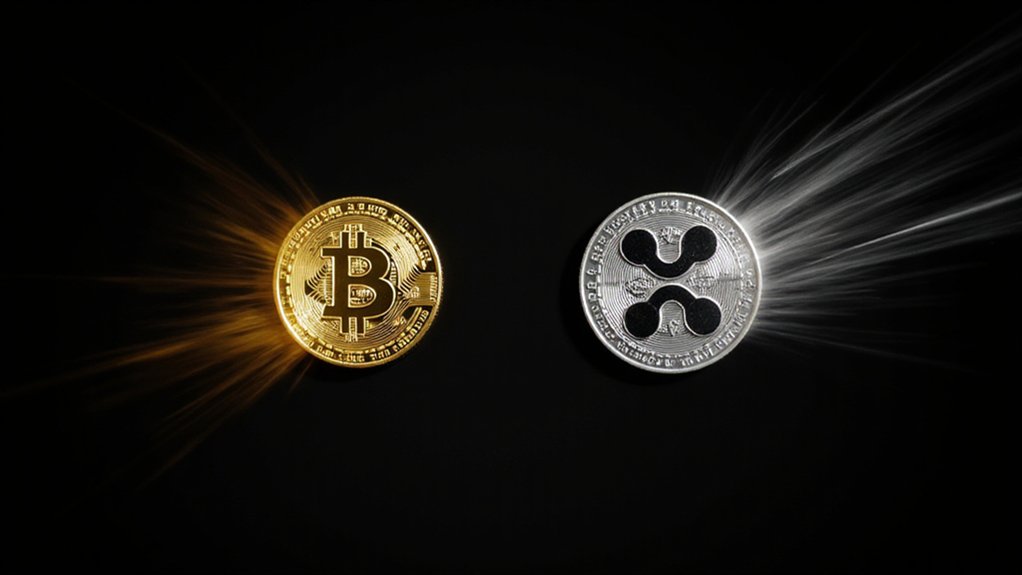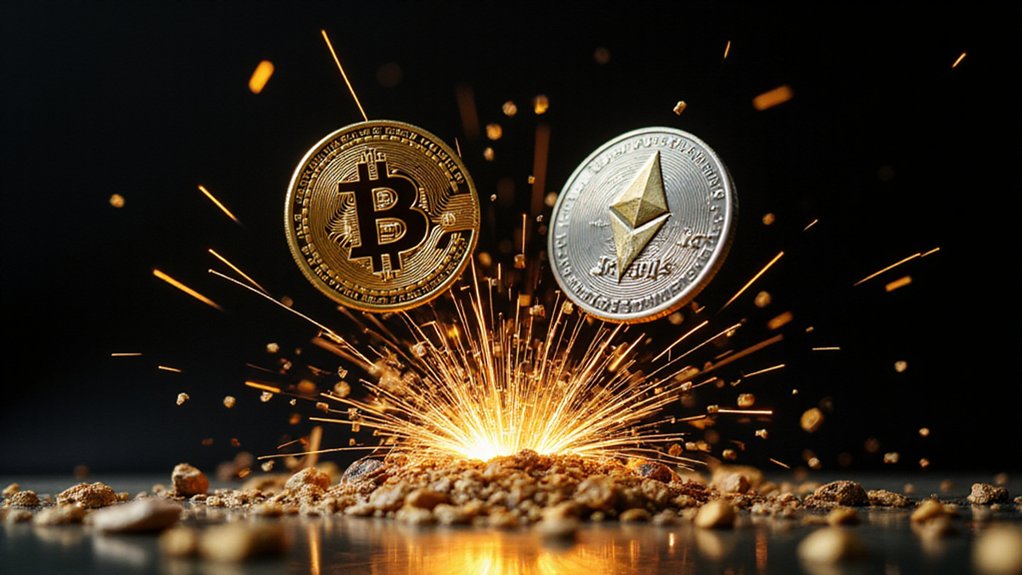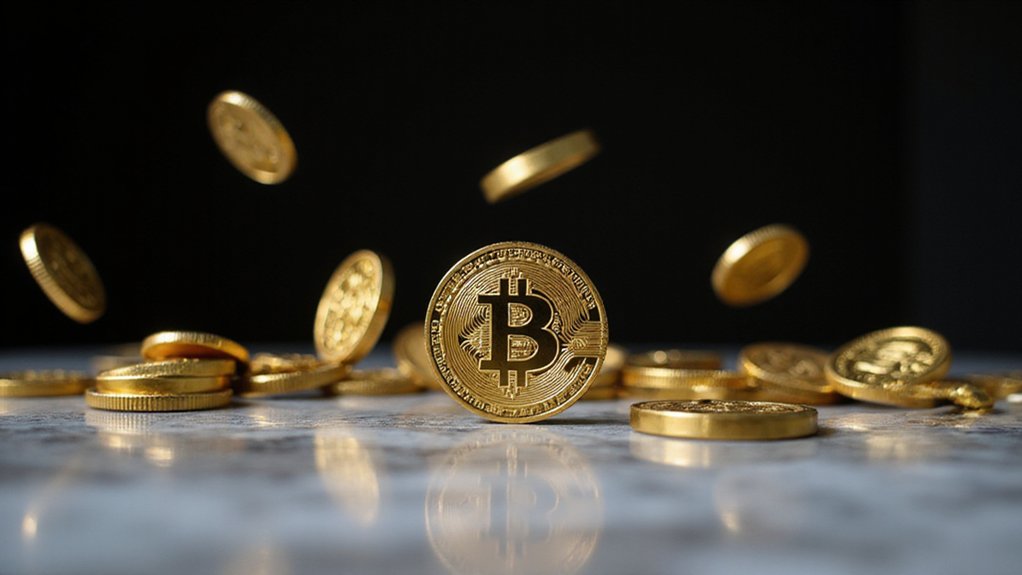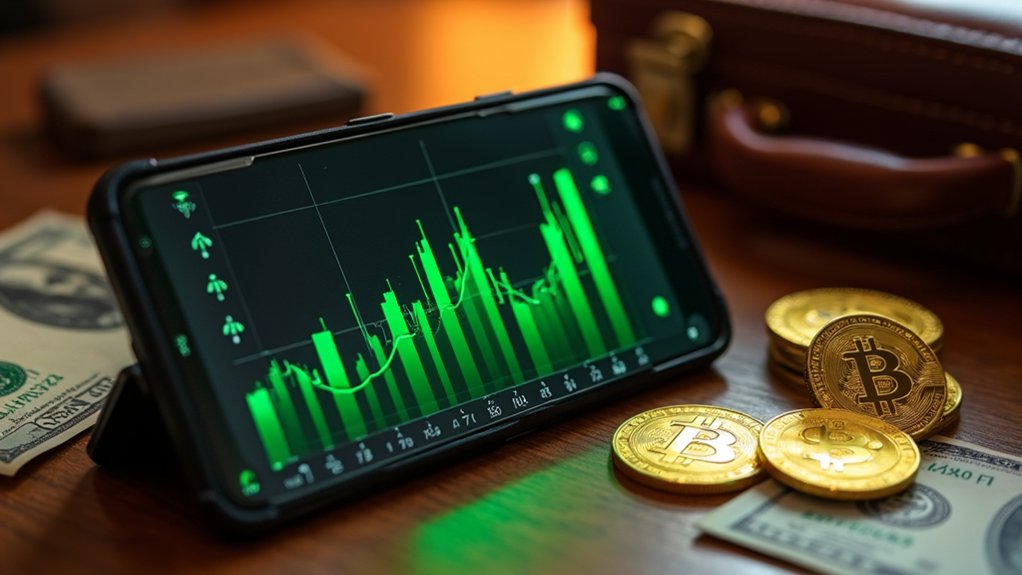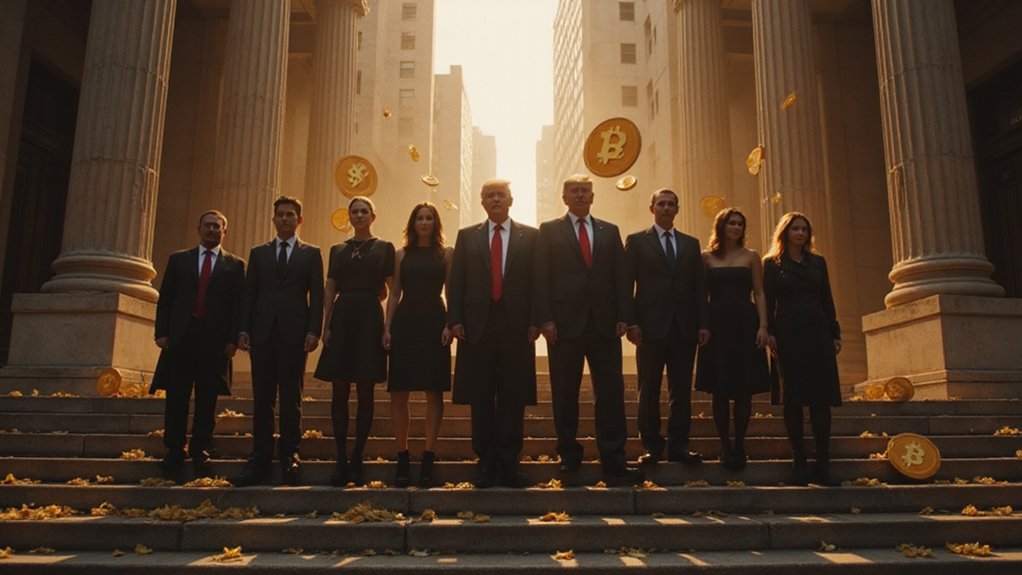The cryptocurrency markets, those bastions of rational behavior and predictable price movements, find themselves once again traversing the turbulent waters of global trade tensions—a scenario that would be almost poetic if it weren’t so financially consequential.
While Bitcoin, the grandfather of digital assets, has managed a rather pedestrian 3% rise in early 2025, XRP has decided to channel its inner overachiever with a commanding 23% surge year-to-date. This divergence in performance reflects more than mere market caprice; it illuminates the evolving dynamics of institutional preference and technological utility in an increasingly volatile economic landscape.
Bitcoin’s modest gains pale beside XRP’s theatrical performance, revealing institutional investors’ pragmatic pivot toward utility over cryptocurrency mythology.
XRP’s ascent from $1.75 on April 9 to its current perch around $2.55 demonstrates the market’s growing appreciation for speed and efficiency over brand recognition—a development that would have seemed heretical during Bitcoin’s heyday. The token’s institutional partnerships and Ripple’s blockchain architecture, specifically designed for cross-border transactions, have positioned it as the pragmatic choice for entities seeking liquidity provision amid uncertain geopolitical conditions.
Trade tensions, those reliable harbingers of market chaos, have transformed cryptocurrencies into reluctant safe-haven assets. While traditional wisdom suggests that economic volatility should benefit Bitcoin’s store-of-value narrative, XRP’s superior scalability and transaction efficiency appear to be winning the practical applications race. The irony is palpable: the cryptocurrency designed for bank partnerships is outperforming the one originally intended to replace banking entirely. Regulated platforms like ErisX (now operating as Cboe Digital) have facilitated this institutional adoption by providing CFTC registration and advanced capital markets workflows that bridge digital assets with traditional financial markets.
Analyst projections paint an intriguing picture, with some forecasting XRP reaching $10 in 2025 while maintaining more grounded expectations of price fluctuations between $2.03 and $2.27 by October. Bitcoin, meanwhile, continues to inspire the kind of optimistic speculation that borders on mathematical fantasy—with some scenarios suggesting a $100 million price target that would require a market capitalization exceeding global GDP. Technical indicators currently show a bearish market feeling at 73%, suggesting that despite recent gains, investor sentiment remains cautious about near-term performance.
The regulatory environment remains characteristically fluid, with changing trade policies potentially reshaping cryptocurrency adoption frameworks. As compliance requirements evolve and anti-money laundering provisions tighten, the market’s preference for institutionally-friendly assets like XRP becomes increasingly logical, even if it challenges Bitcoin’s traditional dominance narrative. The resolution of Ripple vs. SEC lawsuit has further cemented XRP’s institutional appeal by removing regulatory uncertainty that previously hindered widespread adoption.
